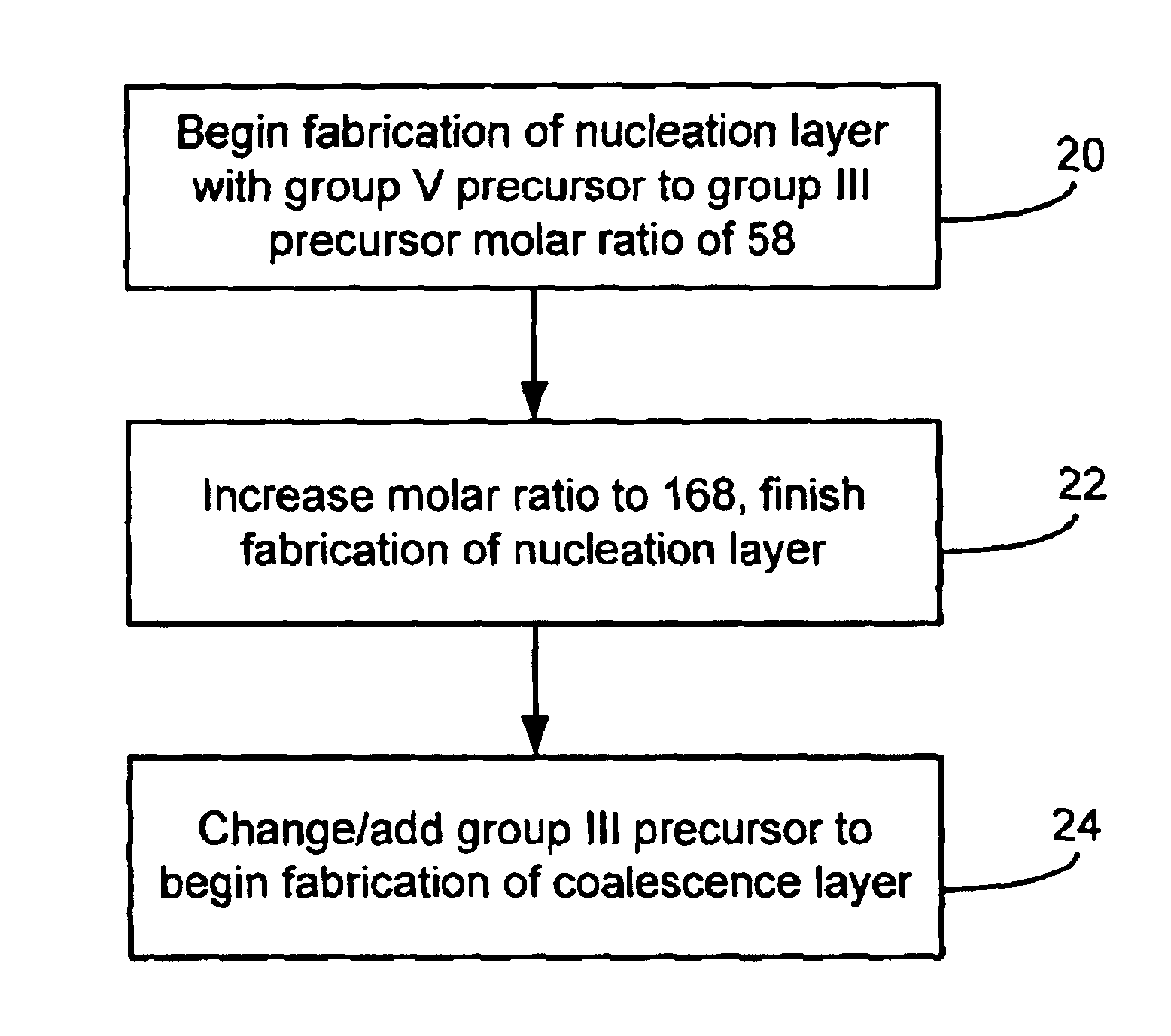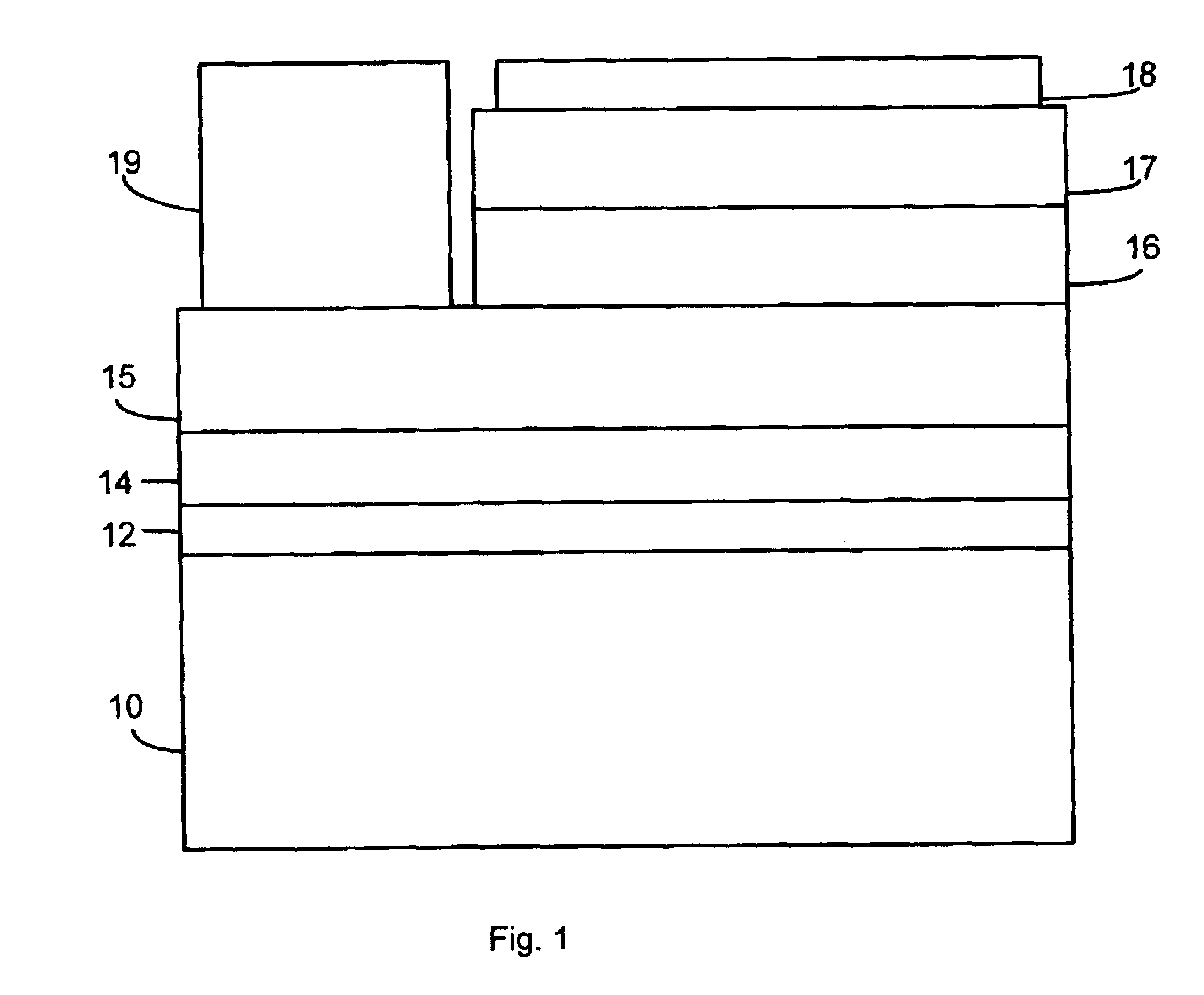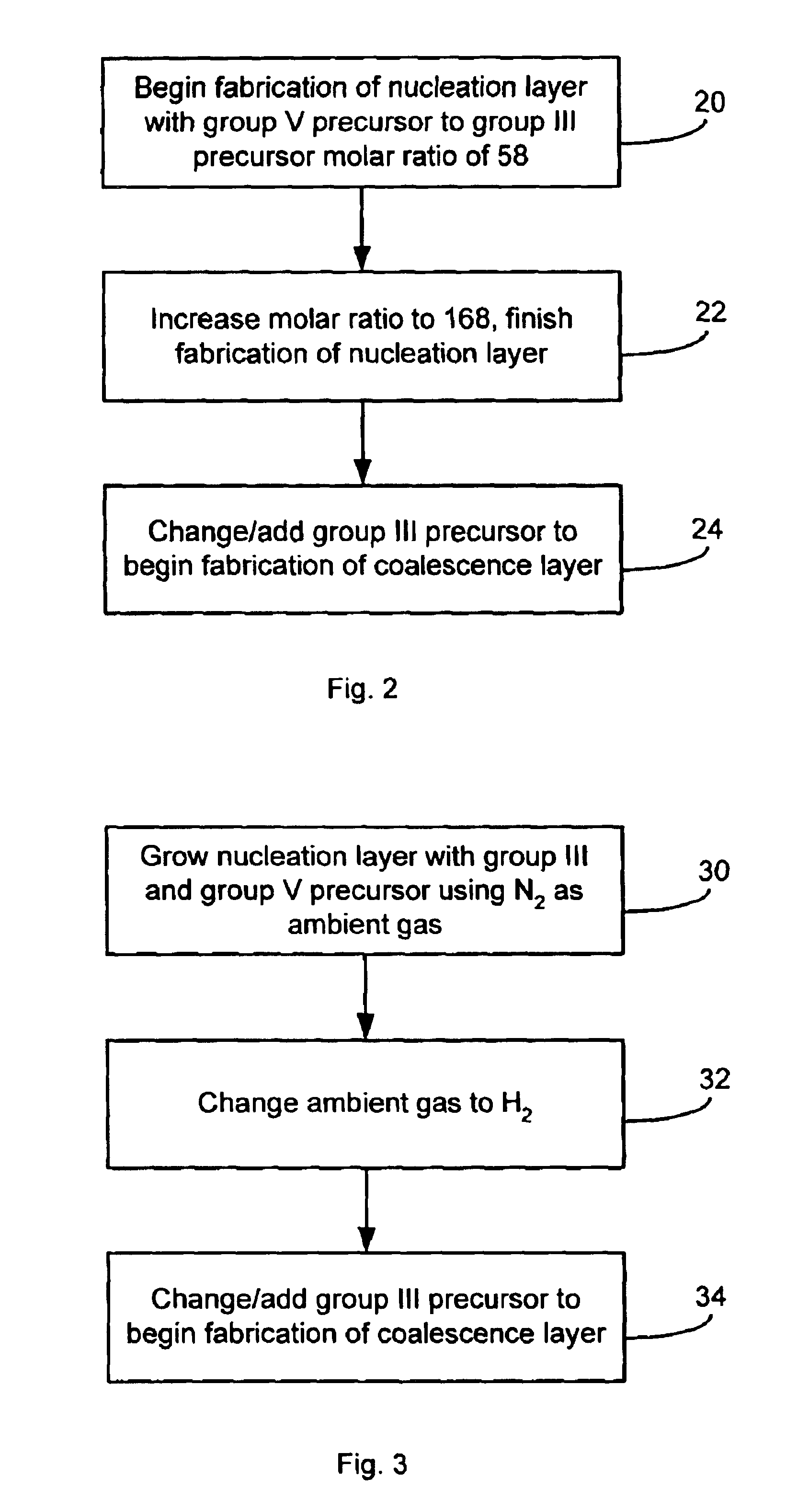Growth of III-nitride films on mismatched substrates without conventional low temperature nucleation layers
a technology of iiinitride and substrate, which is applied in the direction of polycrystalline material growth, crystal growth process, chemically reactive gas growth, etc., can solve the problems of increased accumulation probability, unsatisfactory use of low temperature nucleation layer, and difficult fabrication of thick, flat, defect-free iii-nitride layers, etc., to reduce the reaction between the group v precursor and the substrate, reduce the ratio, and eliminate the effect of temperature cycling
- Summary
- Abstract
- Description
- Claims
- Application Information
AI Technical Summary
Benefits of technology
Problems solved by technology
Method used
Image
Examples
Embodiment Construction
[0016]FIG. 1 illustrates a device according to an embodiment of the present invention. A high temperature nucleation layer 12 is formed over sapphire substrate 10. A coalescence layer 14 is then formed over nucleation layer 12, followed by an n-type region 15, an active region 16, and a p-type region 17. Each of n-type region 15, active region 16, and p-type region 17 may contain multiple layers of the same or different thickness, composition, and dopant concentration. In addition, n-type region 15 may contain one or more p-type layers, active region 16 may contain one or more n- or p-type layers, and p-type region 17 may contain one or more n-type layer. A portion of active region 16 and p-type region 17 are etched away to expose a portion of n-type region 15 on which n-contact 19 is formed. P-contact 18 is formed on p-type region 17. Contacts 18 and 19 may be reflective, such that light is extracted from the device through substrate 10, or transparent, such that light is extracted...
PUM
| Property | Measurement | Unit |
|---|---|---|
| thickness | aaaaa | aaaaa |
| thickness | aaaaa | aaaaa |
| temperature | aaaaa | aaaaa |
Abstract
Description
Claims
Application Information
 Login to View More
Login to View More - R&D
- Intellectual Property
- Life Sciences
- Materials
- Tech Scout
- Unparalleled Data Quality
- Higher Quality Content
- 60% Fewer Hallucinations
Browse by: Latest US Patents, China's latest patents, Technical Efficacy Thesaurus, Application Domain, Technology Topic, Popular Technical Reports.
© 2025 PatSnap. All rights reserved.Legal|Privacy policy|Modern Slavery Act Transparency Statement|Sitemap|About US| Contact US: help@patsnap.com



